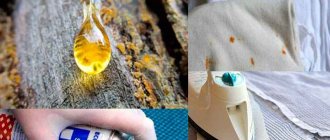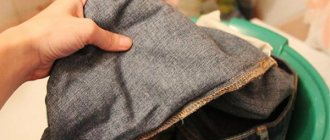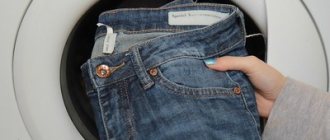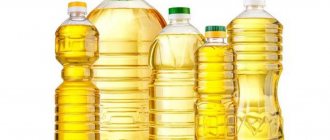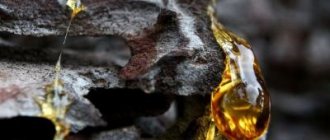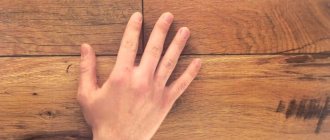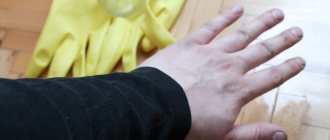At the next project I am involved in, it was necessary to replace the wooden covering in the bathhouse. It was made from homemade boards, so immediately after starting to dismantle the coating, it turned out that resin began to be released in some places. He cleaned the resin, replaced the boards, and gave the owner a lecture about wood and resin, and also told him how to clean the resin from the board. Having arrived home, I decided that it would be useful for you to learn how to remove resin from the surface of the board.
Source ytimg.com
How to remove resin using folk remedies
Wooden boards are a very popular material, which, when working with it, often gets dirty with resin, which is undesirable. Below I will tell you about proven ways to remove resin from a wooden board.
Wood is an inert material, so cleaning its surface from resin will not be difficult. For this we will use folk remedies, because it will not be difficult to find liquids that dissolve adhesive substances at home.
Ammonia and acetone
A solution for dissolving resin from ammonia and acetone is prepared by mixing these two components in a ratio of 2 to 1. And the process of removing resin occurs as follows:
- apply the solution to the board using a rag;
- rub in the product until foam appears;
- leave the board with foam for 20 minutes;
- wipe the surface of the board with a clean damp cloth;
During the degumming process, a layer of wood 1-2 mm thick is removed. Therefore, it is advisable to carry out the procedure after sanding the wooden material.
Source ad-cd.net
Potash and soda
To make this reagent you will need potassium carbonate, also known as potash, and soda. They need to be mixed in equal quantities; 50 g of each component will be enough.
The powder mixture must be poured with a liter of hot water. Next, you need to wipe the boards stained with resin with a still hot solution until the areas of the boards stained with resin are completely cleaned.
It will be most convenient to do this with semi-hard or soft brushes, although sponges can also be used. However, do not use metal brushes; they are not suitable for processing with alkalis and can damage the wooden surface. After the process, it is necessary to rinse and dry the surface of the board.
If you want to speed up the procedure, add 250 ml of acetone to the ready-made mixture.
Source alicdn.com
Vinegar
You can also get rid of unwanted resinous stains and sagging with the help of weak acids. For example, acetic acid, which is extremely easy to find at home.
Before applying the acid, you must dilute the concentrated vinegar with water. Proportion 1 to 50.
A rough sponge, rag or brush should be moistened in the solution, and then rub the material until it is clear of resin.
A similar solution can also be used to wipe the material after using alkalis, since during the neutralization reaction the vinegar will remove the excess reagent.
Washing from clothes
After the composition gets on the fabric, the stains are absorbed very quickly and harden no less quickly. Aggressive techniques can destroy the fibers, so cleaning will lead to irreparable damage to the item. But you can try to clean small resin stains in this way:
- Ammonia solution 10% or ethyl alcohol. You should moisten the stain, and after a couple of minutes, clean it with the corner of a spatula.
- Freezing. Place the bag with the item in the freezer for a couple of hours, then scrape off the epoxy.
- Heating. Place white paper on the epoxy stain and iron it until the compound melts. Remove it with any suitable device.
There are also more exotic methods for removing stains. Thus, the resin can be dissolved by the action of Pepsi or Coca-Cola soda, after which it can be removed from the fabric. You can also lubricate the drips with the pharmaceutical preparation “Dimexide”. Mix it with water 1:3, wet the item, and remove the stain. After using any method, you need to wash the product in a machine with regular washing powder.
How to scrub with professional compounds
You can clean a wooden product from resin not only using folk methods; there are professional means for this. The most common such means are acetone, alcohol, white spirit, nitro solvent. In some stores you can find special products for removing tar.
White Spirit
White spirit is an organic solvent that is used for diluting: alkyd enamels, varnishes, oil paints, mastics. Due to its composition, white spirit perfectly dissolves fats, oils, and organic sulfur compounds. Therefore, it removes traces of resin well on the surface of wood.
The process of cleaning the surface of wood from resin with white spirit is as follows:
- soak a rag or cotton pad in solvent;
- apply the product to the area stained with resin;
- wait a few minutes;
- Use a rag to wipe off the sticky residue from the edges to the center.
Source wikimedia.org
Mellerud
Mellerud is a special product designed to remove traces of glue, but it can also remove:
- lipstick;
- mascara;
- soot;
- resin;
- oil.
The following types of surfaces can be treated with this product:
- polyvinyl chloride;
- wooden;
- textile;
- ceramic;
- glass.
Cleaning the surface of resin using Mellerud occurs in the following order:
- apply the solution with a sponge or brush to the surface stained with resin;
- wait a while;
- Wipe the surface with a clean cloth.
Source ytimg.com
Solvent
Solvent is a universal nitro solvent that is used to work with the following substances:
- oils;
- paints;
- bitumen;
- rubber;
- enamels;
- varnishes.
The surface stained with resin is cleaned using a solvent in a similar way to other solvents:
- Apply the product to stains with a rag or a dampened brush;
- wait a few minutes;
- wipe the surface with a clean cloth.
When working with solvent, follow standard safety rules for handling toxic liquids, and also use gloves and a respirator.
Source avto-sila.com.ua
Old method - ammonia + turpentine
To prepare the mixture, you need to combine 1 tsp. ammonia with the same amount of turpentine and add 1 tbsp. l. starch.
- The resulting paste should be applied to the stain, trying to apply only the contaminated area.
- Wait a few hours and remove the dried mass from your clothes.
- After the operation, it is necessary to wash the cleaned item.
Mechanical removal
In order to remove resin from the board mechanically, you must wait until the accidentally applied mass hardens. Then it is removed using a knife, scalpel, spatula or any other sharp object. After removal, you need to polish the surface with sandpaper or another grinding tool.
Sometimes it makes sense to cut out large resinous areas in the area of knots with a knife or drill with a router. The indentations made must be filled with putty or a wooden chip placed on glue, after which the board must be sanded.
If you miss drops of resin, over time they will become a source of new sticky drops. And when heated, the release of resin on softwood boards increases.
Temperature effect
Pine resin and viscous contamination from poplar can be removed under the influence of temperatures. Cleaning is done by freezing or heating.
Freezing resin
The viscous substance becomes brittle at low temperatures and can be easily removed. To do this you need to do the following:
- Place ice cubes, packed in a bag, on the inside of the jeans.
- Wrap the clothes themselves in plastic.
- Place the item in the freezer for an hour and a half.
- Remove jeans and print.
- Remove the stain: the resin will crumble and be easily shaken off the fabric.
- Remove the remaining particles of the frozen mass with a brush.
Heating with an iron
You need to do the following:
- Wrap the board in cloth.
- Put the thing down.
- Place a napkin on top.
- Set the iron to medium heat.
- Iron the stain.
- Periodically replace the napkin with a new one.
- Perform these steps until the stain disappears completely.
You can use a hairdryer: a hot stream of air is directed at the dirt, the resin is melted and cleaned off with a napkin.
Features of cleaning before and after painting
It is recommended that degumming be carried out before painting, since applying a paint coating to a wooden surface does not stop the appearance of a new portion of resin on the surface.
The chances of preserving the decorative coating by carrying out the de-resining process before painting are higher. Resin can be removed from the surface of wood using various means, including solvent; you can also use a mechanical removal method. However, in any case, after treating the surface, it must be sanded.
If your wood product is already painted, then the process of removing resin becomes more complicated. Use safe products to avoid damaging the decorative coating.
Source yandex.net
The following composition is suitable:
- ammonia (50 ml);
- liquid soap (25 g);
- water (1 l).
The water for mixing the components must be hot, and the process must be carried out until the liquid has cooled. Using a rag soaked in a soap solution, remove the released resin.
I recommend the following video, in which the author cleans the board from resin:
Additional Tips
With any method of removing resin, it is advisable to remember and apply useful recommendations . They will help you achieve the desired result, preserve wood material and protect your health:
- When using ready-made solvents, you must wear personal protective equipment (gloves, respirator).
- Chemical cleaning should be done outdoors or in a well-ventilated area.
- If conditions permit, the boards should be exposed to high temperatures. Heating will speed up the release of resin from the wood, and the problem will not recur in the future.
- In some cases, you can get rid of resin deposits on a wooden structure using a blowtorch.
Recipes and tips for removing resin from various surfaces are presented in this section.
As a result…
Wooden boards are a very popular material, but they very often get dirty with resin, which can cause unnecessary problems. Therefore, the resin is removed from the surface of the board. And for this process they can use ready-made chemistry, folk remedies or mechanical methods. The de-resining agent must be selected based on whether your product is painted and the amount of resin on it. After cleaning the board in any way, its surface must be sanded.
Question
Write in the comments what do you think is better for removing tar – folk or professional remedies?
What not to do
Before you try to clean clothes from spruce resin, you need to know what you absolutely cannot do. After all, carrying out this or that manipulation can only aggravate the problem, completely ruining the thing. Not recommended:
- Wash . Resin is not just a simple stain; soaking and washing will not help.
- Rub . Definitely a bad idea, the resin will eat into the fabric even more, and the stain will be many times larger.
Why you need to clean stains immediately
The resin instantly eats into fabric fibers and can pose a serious danger to clothing, various kitchen utensils, and cars. And if it is of synthetic origin, it hardens in seconds, because it is used for gluing and fixing various parts
The nature of the resin is such that it quickly sets and sticks together, so it is important to clean contaminated products immediately
And if the moment is missed, then stains will remain on the thing, and all that remains is to throw it away. If you intervene without delay, you can prevent unpleasant consequences. It should be noted that the frozen dry layer can be removed without much effort, but a noticeable dark mark will still remain and will inevitably spoil the appearance of the item.
